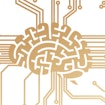
Studies in individuals with autism and in autism mouse models suggest that alterations in parvalbumin expression in interneurons may represent a unifying molecular hub for autism pathobiology. By manipulating parvalbumin levels in transgenic mice, Beat Schwaller expects to shed new light on the role of parvalbumin-expressing interneurons in autism.
